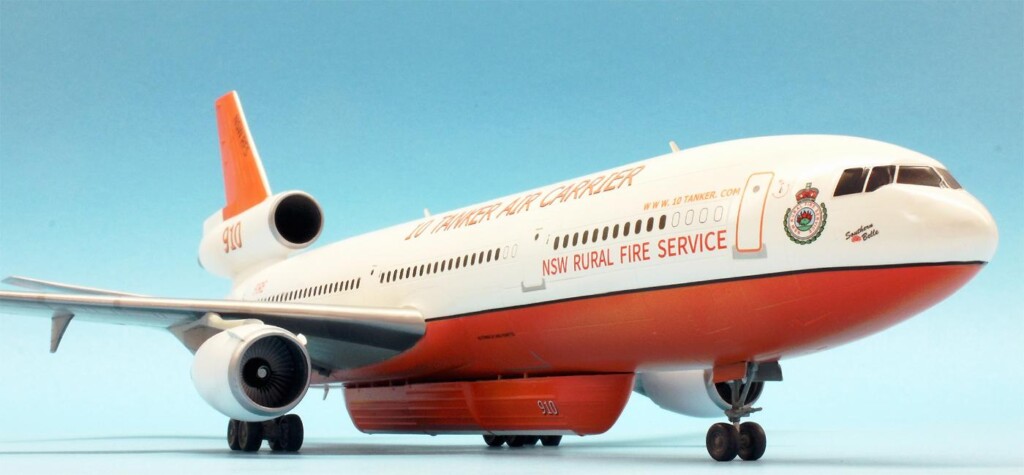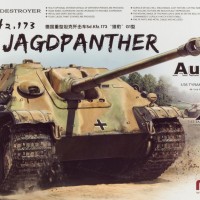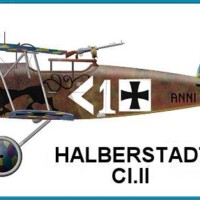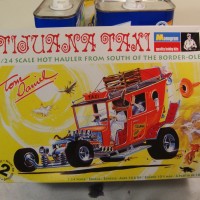What a sight! McDonnell Douglas DC-10 Air Tanker
With some modelling projects, it is quite clear what motivated you to build them. In the case of the rare DC-10 modification presented here, I can easily identify three factors that I would like to present below.
Fascination number one: the technology
Isn't it highly astonishing that such a powerful aircraft as the DC-10 is used as a firefighting aircraft when manoeuvrability and small-scale manoeuvring are an absolute requirement for these challenging missions?
In fact, the use of wide-bodied aircraft to fight wildfires has long been controversial. Concerns about limited manoeuvrability and high costs stood in contrast to the tempting possibility of being able to deploy huge quantities of extinguishing agents in a concentrated manner. It is therefore interesting that at the turn of the millennium, the Texan company "10 Tanker Air Carrier" dedicated itself to the task of making large passenger aircraft operational as extinguishing agent carriers. Preparations and, above all, the selection of a suitable wide-body jet had been underway since 2002 and the DC-10 was chosen as the most suitable wide-body jet. Equipped with a system of three interconnected individual tanks derived from the proven "Erickson Air Crane" tank system, the potential was tested on a purchased DC-10-10 passenger jet. The trials were so successful that "10 Tanker Air Carrier" has been using the modified wide-body jets as firefighting aircraft since 2006, based at Southern California Logisitcs Airport near Victorville in southern California and Sacramento McClellan Airport in the north of the state. Following the decommissioning of the first DC-10, the company is currently still operating four of the DC-10s that have been converted into fire-fighting aircraft.
The "Erickson Air Crane" tank, consisting of three individual tanks, is mounted a short distance below the fuselage of the DC-10. The flat top of the tank is the seat of powerful ventilation valves, which ensure that the 45 tonnes of extinguishing agent and water can be emptied precisely in 8 seconds. After landing, it takes an average of 15 to 20 minutes to refill the tanks, depending on the performance of the external pumps. Another remarkable feature of this spectacular design is the low ground clearance: a full 38 centimetres separate the underside of the tank from the runway.
The original concerns about the lack of manoeuvrability have been dispelled in practice. The DC-10 refuelled for firefighting operations takes off on average forty percent below its "maximum gross takeoff weight" (MGTOW), which keeps it well within the prescribed safety limits in all flight conditions, which in turn means that it can be "flown out" to its limits. A spectacular performance is therefore guaranteed during fire-fighting missions!
Fascination number two: "the action"
The extinguishing agent load is placed on an area 91 metres wide and 1.6 kilometres long by the modified DC-10 "Air Tanker". What can be written so simply here was the second thing that really excited me about this project! AMP certainly chose the moment when the extinguishing agent is released as the motif for the cover image for good reason: a flying DC-10 is in itself a highly impressive and sensory-straining affair; when it now releases tonnes of water in huge cascades within a few seconds, powerfully slow and just above the ground, it must be a breathtaking experience in every way. For a while, I speculated about staging my model in this way, but the elaborate modifications to the various wing flaps required to do so put me off this wonderful idea... Nevertheless, this remains a key scene, so to speak, that tempted me to tackle this project.
Personally, I find the DC-10s from "10 Air Tanker Carrier" not only worth seeing when they are flying and in action, but also when they are on the ground. The livery of the N612AX shown here in the model features the company's typical colours of red-orange and white. If you take a closer look, you will notice another special feature: the inscription "NSW Rural Fire Service" refers to the operations of "10 Air Tanker Carrier" in Australia. For the first time in 2009/10, then in the 2015/16, 2017/18 and 2019/20 seasons, individual DC-10s were deployed to various Australian states to help fight and contain bushfires. The aircraft pictured here was stationed at RAAF Base Richmond, New South Wales from September 2015 and flew a total of 32 firefighting missions in Victoria, NSW and Tasmania over the next five months.
Fascination number three: the kit
I had been on the trail of the AMP DC-10 kit for some time. Some of the excellent completed models that can be found online have awakened in me the idea of a well-made, well-equipped model kit that is well supplied with interesting versions. In short, this was a kit I really wanted! When I came across the fire-fighting aeroplane version, the time had come.
The contents of the box certainly lived up to the high expectations. The clear parts for the cockpit would have made it possible to look at the ambitiously detailed cockpit. However, as is usually the case in this scale, I decided to build the cockpit windows with the decals provided: the window edges appear to me to be more precisely depicted and more appropriate for the scale.
AMP offers plastic parts that fulfil the definition of "short run". Above all, this means that there are no locating pins and that some of the sprues are quite thick-walled - even for quite delicate parts. On the other hand, the accuracy of fit is not bad at all, and the parts themselves are characterised by fine structures and recessed panel lines. The parts layout of the kit is well thought out, for example in the way in which sharp trailing edges are achieved.
However, individual assemblies are quite complex. The two engines mounted under the wings can serve as an example here. A large number of sometimes very delicate individual parts have to be installed for these engines - and the accuracy of the fits leaves a lot to be desired. There is no getting around sanding and prior filling in the area around the rear engine, but overall this additional work is limited and does not get out of hand.
As an addition on my part, the DC-10 was fitted with hydraulic lines on the undercarriage legs, otherwise the model can be seen here built out of the box.
All in all, it can be said that this is a really great kit. The finished model scores points, even in 1:144 scale, with its size, volume and "showcase presence", so that I can conclude by presenting fascination number four: the AMP model of the DC-10 as a fire-fighting aircraft knows how to inspire - and is highly recommended by me!



























Very cool, Roland (@rosachsenhofer). I am also very interested in fire tankers, but you never see them modeled. Having a very detailed model in this scale is a double-edged sword...you get the detail, but you also have to deal with very small parts. It is clear you have mastered working on small-scale kits. Well done.
Thank you very much for your kind comment! George, your comment about the fire-fighting aeroplane models, which are actually really worth seeing, is to the point - that has to be corrected. This year I will try to make my contribution. 🙂
Beautifully done! Thank you from a firefighter 😉
Thank you for your words - especially welcome! 🙂
I liked your write about it as well….once again very well done
A wonderful build, Roland @rosachsenhofer
It is indeed hard to believe that such a large aircraft is used as a firefighter.
You are fully right about those factors for motivation, and there are a lot more to mention.
Well done.
John, thank you for your comment - may we continue to enjoy these motivating factors for a long time to come!
Amazing result, Roland! Really astonishing to see one such machine modeled, let alone in such excellent manner!
Congratulations!
Thank you for your kind words, my friend!
Nice, I have seen these here in the Pacific NW dropping on fires, pretty amazing. Great build!
That's interesting - thanks Rob!
Once again, awesome, Roland. I’ve seen these DC-10’s in action with all the fires we’ve had here in California especially three years ago in the Santa Cruz Mts where I’m based. I posted photos here on iM of my visit to Erickson’s own air museum north of Bend, Oregon.
https://imodeler.com/2018/10/roadtrip-flyby-the-erickson-aircraft-collection
Thank you very much for this informative and impressive commentary. The exhibits are impressive - thank you for sharing your thoughts and these pictures!
I once had the thrill of watching one of these make a drop from a distance near Auburn, California. It was almost a surreal experience. Great build Roland! Brought back a memory.
I can imagine that! Thank you very much for your comment!
Excellent DC-10, Roland!
Thank you John!
Well done Roland, from NSW.
Appreciated, thank you!
Very well done, one we don't see every day!
Thank you very much Chas!
Wow - not seen every day! Looks great!
Thanks a lot, Greg!